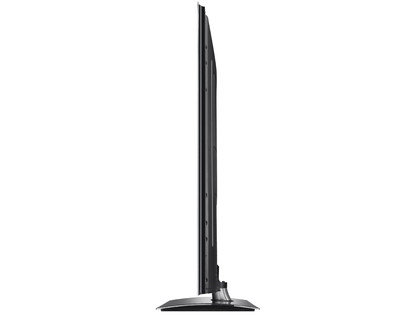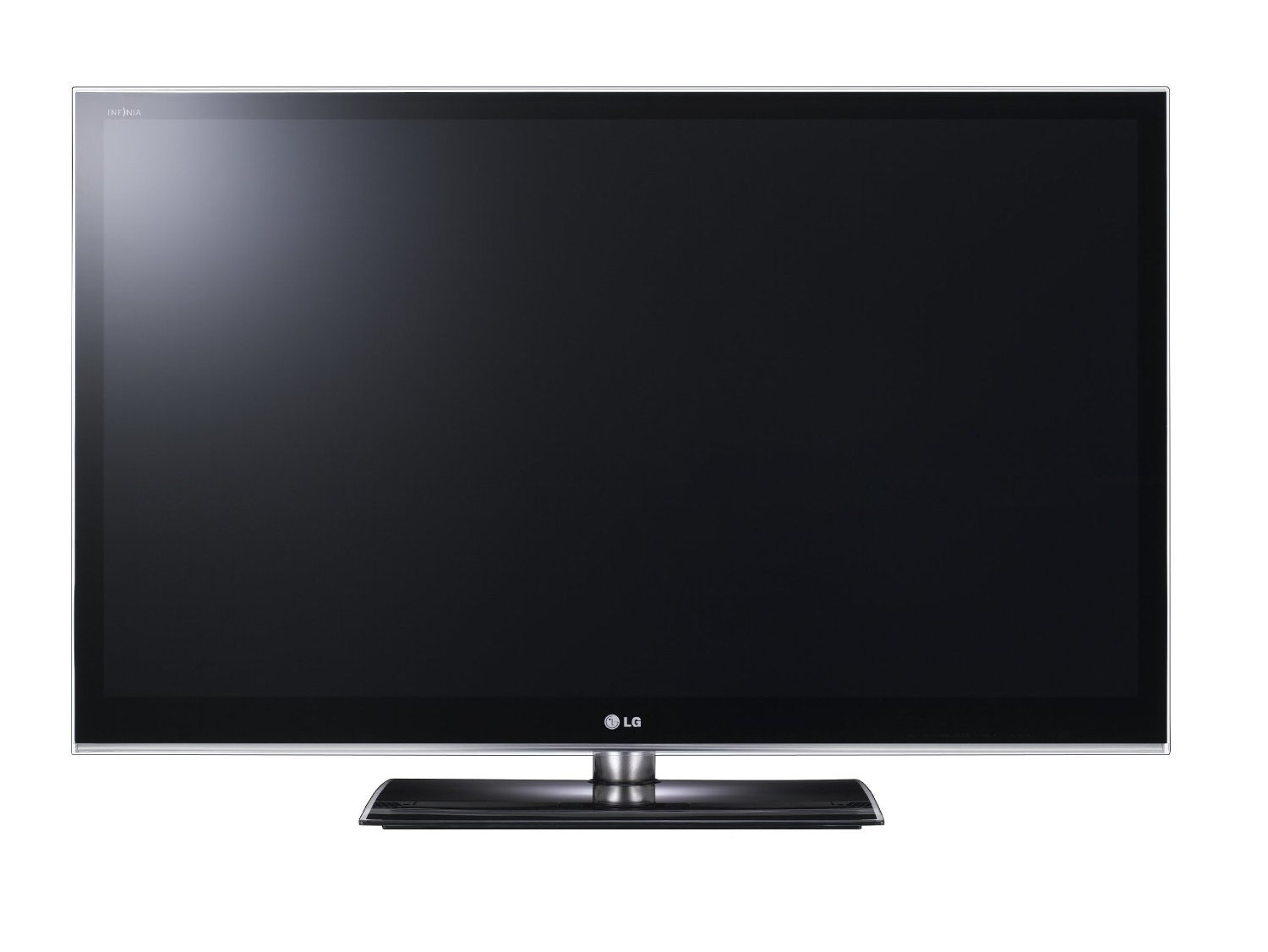Why you can trust TechRadar

Considering that it's LG's flagship plasma TV, the 50PZ950T's pictures are actually a bit disappointing. As soon as the set is asked to handle a dark sequence, for instance, it's immediately apparent that its black level response is considerably less deep than that of the latest plasma TVs from Samsung and, especially, Panasonic.
Dark scenes thus have a rather grey look to them that leaves them looking a little unnatural as well as low on shadow detail.
To put this in perspective, the sort of black level response recorded on the LG 50PZ950T looks similar to the levels noted recently on Panasonic's TX-P42S30B – yet the TX-P42S30B sits towards the bottom of Panasonic's range and costs under £500, whereas the 50PZ950T is LG's flagship 50-inch model, costing over £1,000.
Initially it seemed as if the LG 50PZ950T's rather average black levels were going to negatively impact its colour response too, because reds looked overcooked and greens looked rather dingy. Thankfully, though, a little time tinkering with the colour adjustment options got things looking much better balanced – as well as achieving some pretty good vibrancy levels by plasma standards.
The THX mode is probably the best preset to go for if you can't be bothered to mess with colours yourself, although experience suggests that some people might find the THX preset a touch warm and 'flat' in colour terms.
Another problem for the LG 50PZ950T is image retention. Whenever you have a bright image element or menu on screen for more than a few seconds, there's a good chance you will be able to see a ghostly echo of this image element hanging over subsequent frames for potentially as long as a few minutes – especially if those subsequent frames are very dark.
LG has provided a few tools for combating this sort of image retention – including a picture orbiter – and it must be said too that a) none of the image retention showed any sign of being permanent during this test, and b) the chances of such image retention occurring should reduce after the first 100 hours or so of the LG 50PZ950T's life.
Sign up for breaking news, reviews, opinion, top tech deals, and more.
Another issue with the LG 50PZ950T is the occasional appearance of some brightness 'flicker' when showing a handful of slightly dark (as opposed to really dark) scenes. A similar phenomenon has been seen on Panasonic's plasma TVs for a couple of years now, and when you do see it, it's a little irritating. But it doesn't occur often enough on the LG to be a really major point.

The LG 50PZ950T's best image characteristic is its sharpness when showing HD. Detail levels are high (except for where shadow detail is lost in dark areas), edges look crisp without looking over-egged, and motion enjoys the sort of sharpness you only really get with plasma technology.
The screen's good core levels of brightness help emphasise its HD detailing, as well as allowing colours to look punchy – depending on how you've calibrated them, of course. It's important to add, moreover, that the LG 50PZ950T's impressive sharpness is achieved without pushing the picture over into noisy territory. In other words, the sharpness appears natural, not forced.
Turning to 3D pictures, the LG 50PZ950T thankfully suffers with nowhere near as much crosstalk ghosting noise as LG's entry level 50-inch 3D plasma TV, the 50PW450. In fact, during bright scenes there's scarcely any crosstalk at all, regardless of whether you're watching a 3D Blu-ray or a Sky side-by-side 3D feed.
It wouldn't be accurate to describe the LG 50PZ950T as crosstalk-free, though. Unfortunately you can see traces of double ghosting around bright objects if they're appearing against a dark backdrop. Mind you, the same thing happens to some extent with almost every other 3D TV right now too, bar Panasonic's 3D plasmas.
The LG 50PZ950T's 3D images are unusually bright for a 3D plasma TV, and as a result deliver colours that still look punchy despite the dimming effect of the active glasses. Also, the depth of the 50PZ950T's 3D images feels natural and untiring, despite being definitively 3D, and motion in the 3D frame seems well handled.
The main niggle with 3D viewing actually concerns LG's 3D glasses. Their curved lenses have a nasty habit of picking up reflections of even the slightest amount of light you might have in your room, with potentially distracting results, especially during dark film sequences.
There's one last serious picture problem to report. Namely that the LG 50PZ950T suffers with more than 100ms of input lag, even when set to its Game mode. This can – and does – have a negative impact on your console gaming experience, causing certain types of game to feel sluggish and, more importantly, costing you dearly when playing twitch reaction games such as Call of Duty online.
LG is the only brand currently suffering with such excessive levels of input lag, and it's a problem it really needs to sort out.

John has been writing about home entertainment technology for more than two decades - an especially impressive feat considering he still claims to only be 35 years old (yeah, right). In that time he’s reviewed hundreds if not thousands of TVs, projectors and speakers, and spent frankly far too long sitting by himself in a dark room.
